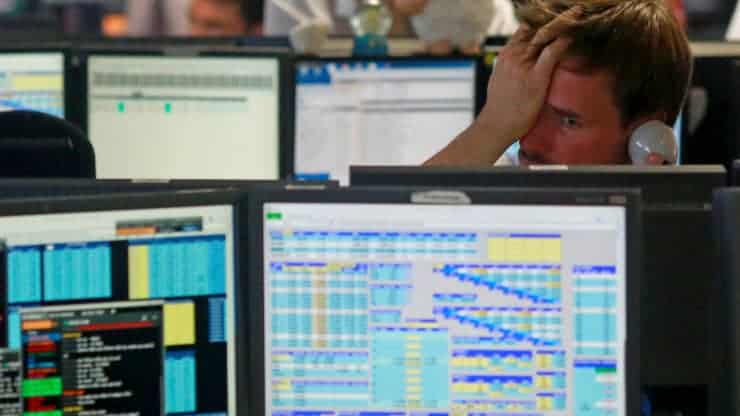LONDON — European fund flow patterns so far this year are emulating historical crisis periods for markets, including the 2008 global financial cash, according to new research from data firm Refinitiv.
A sluggish market environment, lingering concerns around the Covid-19 pandemic and the emerging geopolitical tensions in Europe meant the continent’s fund industry saw net outflows in February that took overall flows so far this year to -57.2 billion euros (-$63.2 billion), according to the research.
Mutual funds — pools from investors allocated by fund managers into stocks, bonds, money market instruments and other securities — faced 67.6 billion euros of outflows in February alone. Meanwhile exchange-traded funds (ETFs) — baskets of securities that trade on regular stock exchanges — enjoyed inflows of 9.2 billion euros.
“Within this market environment and given the economic uncertainties one would expect that European investors sold long-term funds and bought money market products,” said Detlef Glow, head of Lipper EMEA research at Refinitiv.
“Therefore, it is somewhat surprising that European investors sold money market products, which are normally considered safe-haven investments.”
The overall flow figures were heavily impacted by 49.4 billion of outflows from money market products — short-term debt investments — which meant that long-term funds actually only faced around 9 billion euros of outflows even in such a turbulent market environment. These money market products are cash-like funds with a low level of risk and usually offer investors high liquidity.
“Nevertheless, it looks like European investors are taking rising interest rates — caused by the increased inflation rates around the globe — into consideration as they further sold bond products over the course of February,” Glow added.
Over the first two months of the year, mutual funds have seen 91.9 billion euros of outflows while ETFs have taken inflows of 34.7 billion euros.
Glow highlighted that inflows into ETFs within this market environment repeat a trend that was witnessed during previous rough market periods, such as the financial crisis in 2008 or the euro sovereign debt crisis in 2011. In both instances, ETFs saw inflows while mutual funds endured massive outflows.
Refinitiv’s analysis of the best- and worst-selling Lipper Global Classifications for February indicated that European investors were still in a “risk-on mode” despite the challenging market environment.
“In more detail, European investors took positions in sectors that may offer diversification for their portfolio such as global equities or flexible mixed-assets products,” Glow added.
“A closer look at the best- and worst-selling Lipper Global Classifications for the first two months of 2022 makes it very clearly a trend that European investors have been selling some of their safe-haven investments while investing in funds that may offer diversification for their portfolio or are focused on single themes, sectors, and countries.”

